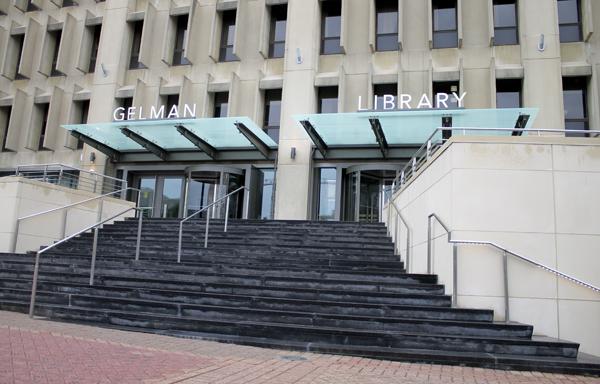As Gelman Library looks to rebound from a decade of struggling to grow resources, its chief librarian says GW will rely heavily on fundraising to expand collections.
University Librarian Geneva Henry is looking to bring in $35 million for the library as part of GW’s $1 billion fundraising campaign. That’s a goal Gelman needs to reach, Henry said, as the library’s budget has flatlined in recent years.
When she’s making a pitch to donors, Henry said she tries to show how Gelman – which she called GW’s academic base – is propelling the University’s interdisciplinary goals.
Henry said she meets with donors who have interests that cross GW’s academic areas, which is why she needs to find out specific ways different donors might give to the library.
“That’s a really key thing, when you’re meeting with donors, is making sure you’re listening,” Henry said. “What do they care about? What are they interested in?”
GW is looking to fundraising to expand its collections as the library has struggled to grow them with a designated collections budget alone. That budget saw its first increase in a decade this year, but the roughly $300,000 in funds were only enough to cover the cost of inflation on GW’s subscriptions.
Gelman was one of three areas across the University to receive a budget increase this year. The University Counseling Center and Title IX coordinator’s office will also have larger budgets, while most academic departments have been asked to cut costs.
University libraries nationwide have had to build up their development efforts in the past decade, as inflation costs on subscriptions have taken up larger portions of annual budgets each year.
Henry said she has tried to meet with more donors than GW’s librarians historically have since the University’s campaign launched in June. She said she has looked to highlight how the library serves as a hub for researchers and is a physical symbol of the strategic plan, which the University expects to fund in part through donations from the campaign.
“When I pull it out of the context of the University, I feel that I lose a lot of the audience,” she said. “They realize that it’s not just about the libraries, but their support for the libraries makes the entire campus a much better place.”
Naming gifts can be hard to secure, she said, and the library tends to have more luck courting donors for tangible donations, like books or travel grants. A $100 donation can fund an academic textbook and a $500 donation provides a study carrel for students.
GW has continued to work with groups that have previously donated special collections to Gelman, most notably the International Brotherhood of Teamsters, which donated collections detailing the group’s history in 2010, Henry said.
She is hoping to bring in donations to name different areas of the recently-renovated entrance floor of the building, and added that she has already started to attract some.
Gelman is also aiming to land larger donations, like $2,500 for an outside scholar to visit the library and use its special collections.
“Putting that out here as an opportunity for funders to fund the position, those are the kinds of things that they can relate to more easily,” Henry said.
Ann Riley, the vice president of the Association of College and Research Libraries, said as librarians have felt more pressure to serve as successful fundraisers, many have focused on special collections to lure potential donors.
When bringing in special collections, librarians have to make sure donors also cover the costs of curating and maintaining the collection, she said.
“Sometimes donors don’t understand the extra costs it takes to curate the collection. It’s more than just purchase price, you have to get enough to curate it properly,” Riley said.
Sari Feldman, president-elect of the American Libraries Association, said libraries have the most fundraising success when they have specific causes they are looking to fund, such as sources on closing the achievement gap between lower and higher-income students.
University libraries have become home bases for research and big-data analysis, which gives them more of a chance to point to their direct effect on a school, she said.
“Whether it’s a case for a corporation and that there’s a work force in future that will work at a donor company, or a case for investments that there’s a strong outcome for success, or a case for individual donor, that’s much more emotional,” Feldman said.
Hanna Willwerth contributed reporting.







